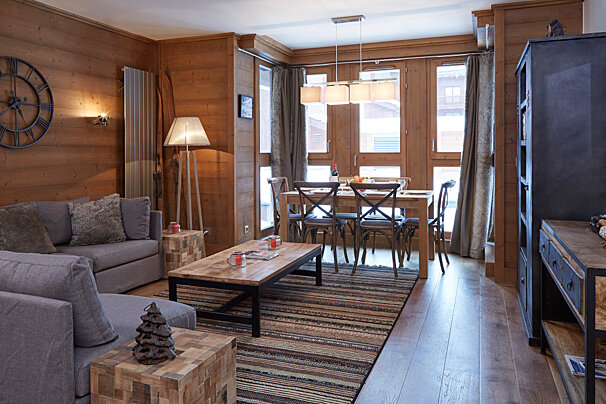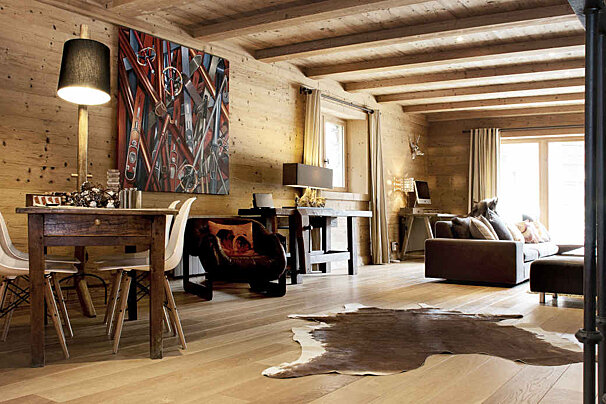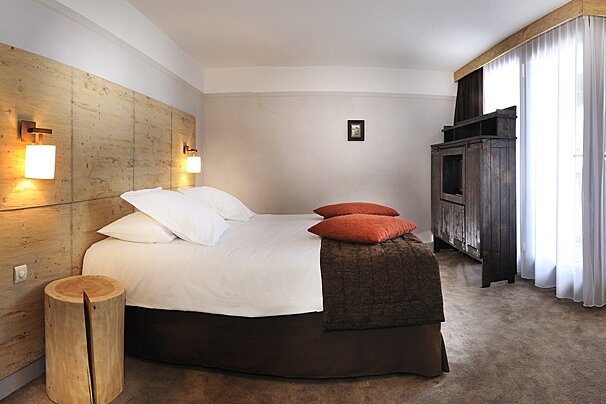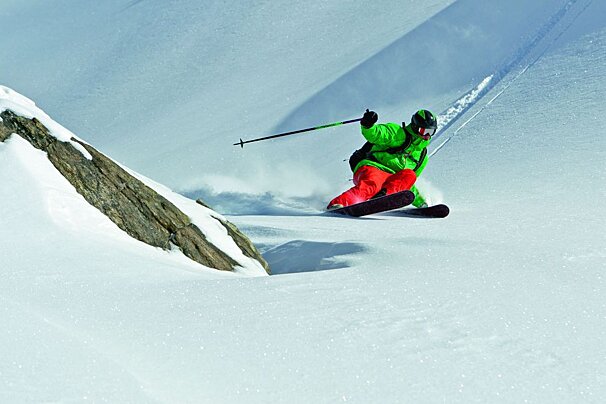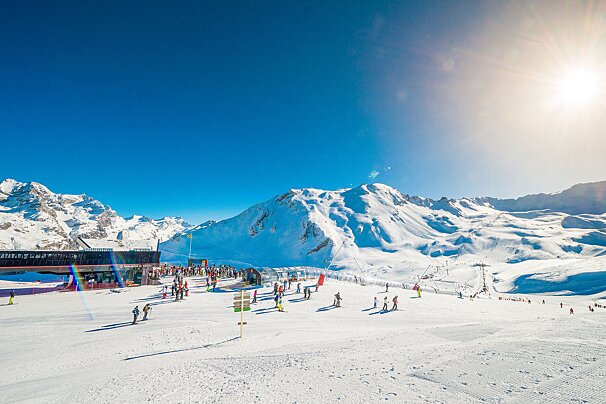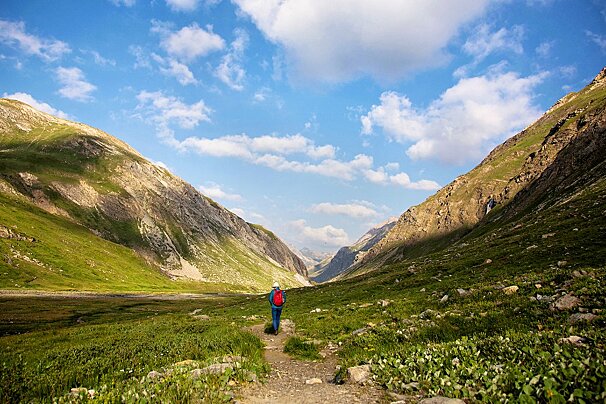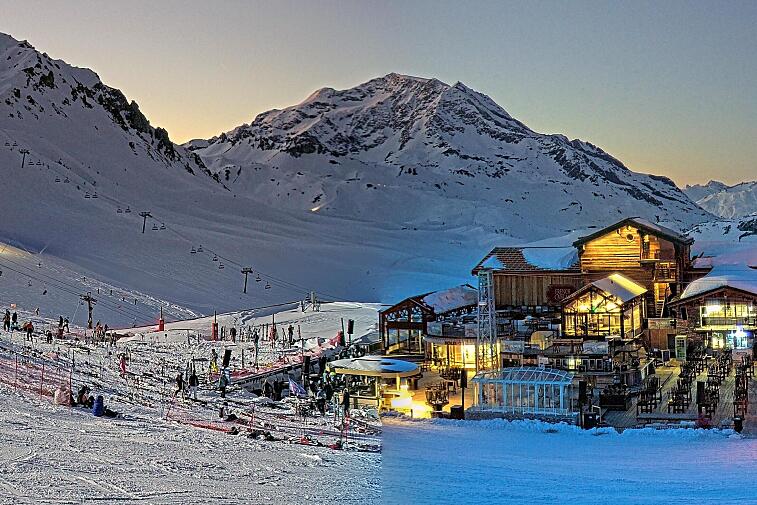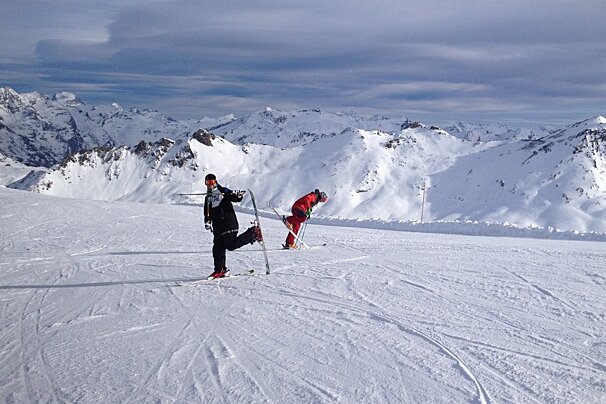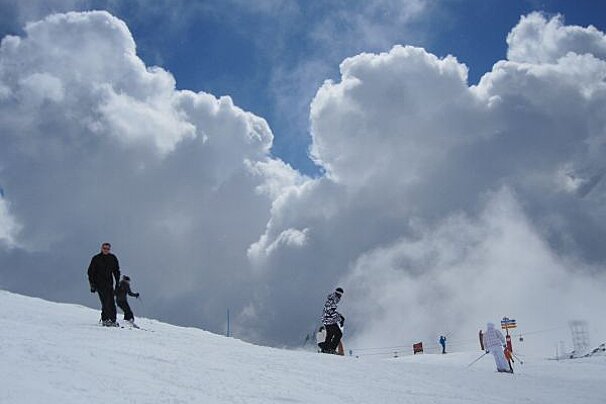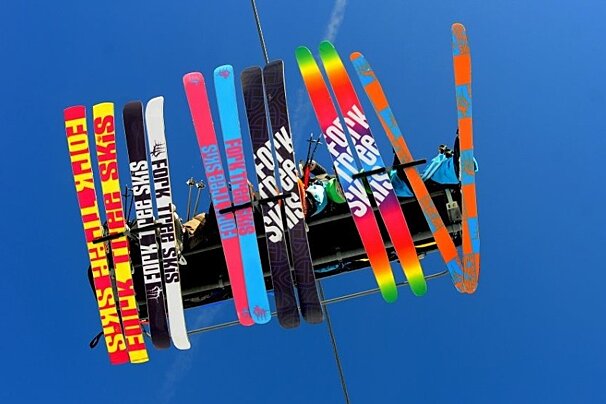Paragliding in Val d'Isere
Discover the top Val d'Isere parapenting
If you’ve never tried paragliding before (or maybe you’re not entirely sure what it is) then Val d'Isere is a great place to learn how to fly.
Known as “parapenting” in France, today there are a number of clubs and organisations in the area whose sole purpose is to get you flying. So, if it is something that you have always fancied trying then Val d'Isere is a great place to give it a go.
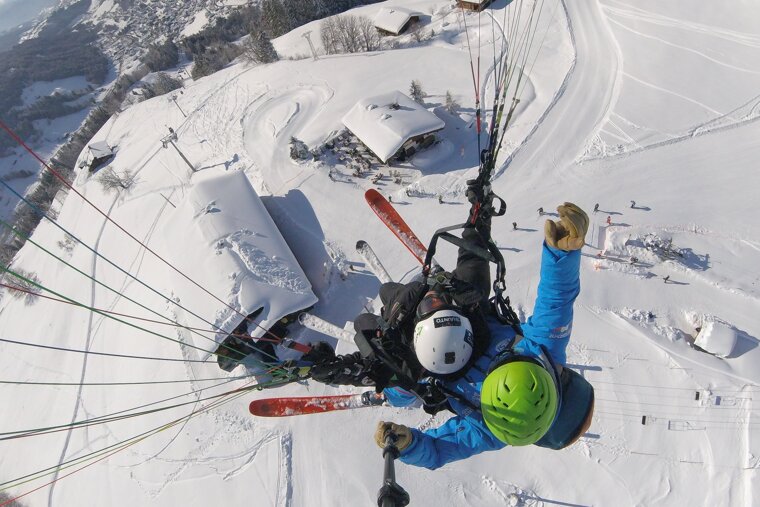
The science
Often described as the "purest and simplest form of aviation", stemming from man’s long term ambition to be able to fly, others simply call it "a pure joy". Paragliders were originally developed from parachuting canopies, although it soon became apparent that the two required very different design criteria. Whilst a parachute has to withstand the incredible stresses of opening in free-fall and enable the pilot to descend at a fairly rapid rate; a paraglider is fully inflated before take-off, launched from the ground and requires a good gliding performance and a slow rate of descent. Paragliders began to take on more of the design features of the hang glider with a high-lift aerofoil shape and long slender wings. It is currently one of the fastest growing air sports in the world with much of its attraction being in the portability of the equipment; a canopy that weighs relatively little, fits in a large rucksack and can be taken all over the world.
Now for the science bit. When a paraglider is fully inflated it forms a solid “wing” which creates lift in the same way as that of a conventional aircraft. It must create enough lift to carry its own weight and that of the pilot and any passengers, and it achieves this with “gliding flight”. This means that the wing is constantly flying forwards and downwards through the air and in doing so provides a flow over the aerofoil section.
The pilot controls the wing with a series of suspension lines that are thin, but very strong, in order to minimise drag and weight. These lines converge into “risers” (usually 25mm webbing straps) that are attached to the harness and spread the weight load evenly over the wing. They also provide the pilot with a convenient single point to hold when launching, and channel the control lines down to the pilots’ hands so that he/she can steer. The controls are the equivalent of the brakes and steering wheel of a car and so by turning left and right and into and out of the wind or thermals, the pilot is able to speed up, slow down and gain or lose height. Modern paragliders are made out of super lightweight nylon meaning they can soar effortlessly through the air for hours on end in the right conditions.
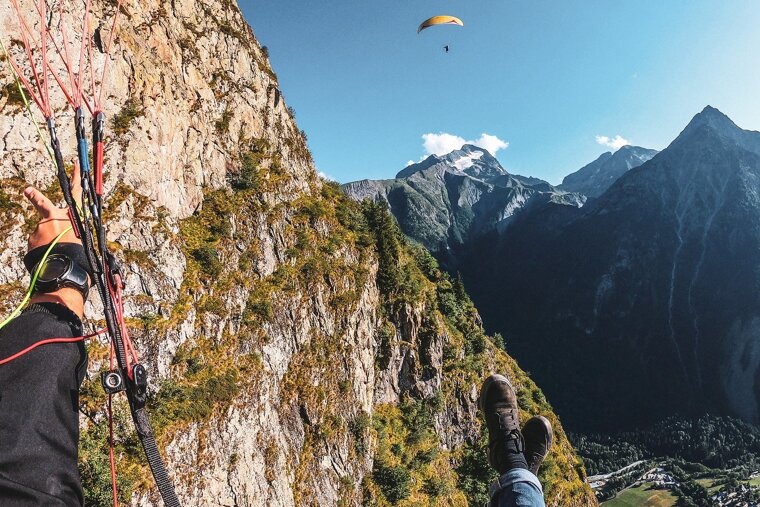
Who can paraglide & what to wear
Pretty much anyone can paraglide, from little nippers to your granny as long as they can run approximately 10 metres for the take off. Flying itself does not require much physical effort (especially if you’re the passenger), hence why people of all ages and occupations can experience the delights of soaring above the mountain tops with only the birds for company. The main take off areas can be accessed by one of the chairlifts, and from the top it is usually just a short walk to the take off area.
Flights can be undertaken solo (but only with prior training from a qualified instructor) or in tandem with a qualified paragliding pilot, therefore opening up the experience to pretty much anyone. Pilots (and their passengers) wear a comfortable “seated” harness that is securely attached to the paraglider (and also to each other, with the pilot behind in the case of tandem flights). The paraglider itself is laid out flat on the ground of the take-off area and the pilot then fully inflates the wing by moving forward when a gentle gust of wind blows. Once inflated, both pilot and passenger run forward a few steps on a downward incline and, with a little manoeuvre from the pilot, you’re airborne.
From a height you will glide down to your destination on a tandem paraglider controlled by the instructor. They manoeuvre the parachute while the passenger enjoys the ride and fantastic views. Taking off is the only slightly scary moment; once you have been equipped with a helmet, and strapped to the instructor behind you, both of you simply run downhill getting faster and faster until the parachute lifts you into the air.
No particular level of fitness is required, just the ability to sit back and enjoy the view. You then peacefully glide above the beautiful landscape below for 10 to 20 minutes, aiming to catch thermals to keep you up for longer. Landing is very gentle and no more of an impact than jumping off a step. Top tip: go on a sunny, warm day when the thermals will keep your airborne for longer.
Clothing is an important factor when flying so you want to wear something that offers a degree of protection from sun/wind/cold etc, even if the weather is hot. Long trousers, a wind proof top, sunglasses and sun cream are essentials, as are good sturdy footwear such as walking boots (with ankle support), which will reduce the chance of slipping on take off or landing.
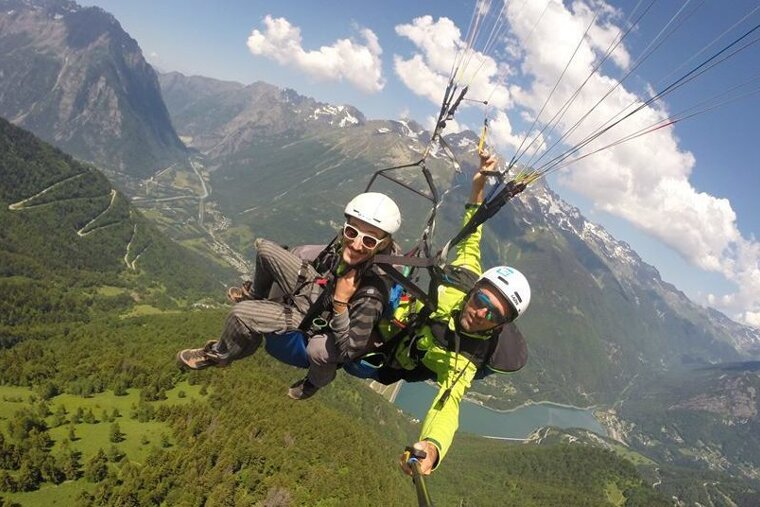
Tandem paragliding
Whether paragliding is a sport that you are thinking of taking up and want to know if you're going to like it; or if you simply want to experience the truly wonderful feeling of flying amongst Val d'Isere's breathtaking scenery - a tandem flight is the perfect introduction.
When booking a tandem flight, it is best to do so a day or two in advance and try and allow yourself some leeway in case of bad weather. It is not possible to fly in poor weather conditions so if your flight is cancelled for this reason, every effort would be made to reschedule it for the next mutually convenient time. It would be a terrible shame to miss out on the experience because you left it until your last day. The actual timing of your flight will be influenced to a certain extent by your age and size, but only in so much as it is better for children or petite adults to fly earlier in the day when the wind is not as strong. Certain take-off sites are also better at particular times of the day when known weather patterns will be present.
Once you've reached the take off area, the whole process will be clearly and calmly explained and a number of safety checks are carried out before the off. There is no rush at all and sometimes the services of a professional photographer are available at the top to record your big moment. The take off is progressive with no feeling of dropping; it is much more a gentle lift up and away from the ground. Once in the air, very few people feel afraid of the exposure (even vertigo sufferers) as the harness is seated and comfortable and it can feel rather like sitting on a plane (albeit with the windows open!) rather than being on the edge of a cliff.
As the passenger, you can choose how you want to fly, usually moving around the mountain to get different views and perspectives instead of circling over the one spot. Don't forget your camera. Ensure that it has a strap on it so that it can be securely attached to the harness leaving you free to snap away and not worry about dropping it should you fancy taking the controls yourself for a while. The landing is also a gradual affair due to the excellent manoeuvrability of the wing; you may need to run a few steps but it is usually gentle and certainly less dramatic than a parachute landing. Friends and family can wait for you at the landing area (or see you off at the top if you prefer) and you have time to relax and talk to your pilot once back on terra firma.
The whole activity normally takes about an hour with the flight itself lasting about 20 minutes. Sometimes, it is possible for a group of you to fly at the same time so you can normally take photos of each other in the air as the pilots will endeavour to fly you close to one another. Tandem flights are possible any day of the year, weather permitting, and that includes the winter. Flying in winter is actually no colder than skiing and in fact conditions are often more stable in the winter months making it an ideal time to take to the air. The launch is generally done on foot although it can be possible to take off on skis by special request and therefore miss the end of day rush to get off the mountain. All flight schools have strict safety standards to meet and equipment must be checked and maintained regularly. It takes many, many hours of flying to qualify as a tandem pilot so you can rest assured that you will be in highly qualified hands.
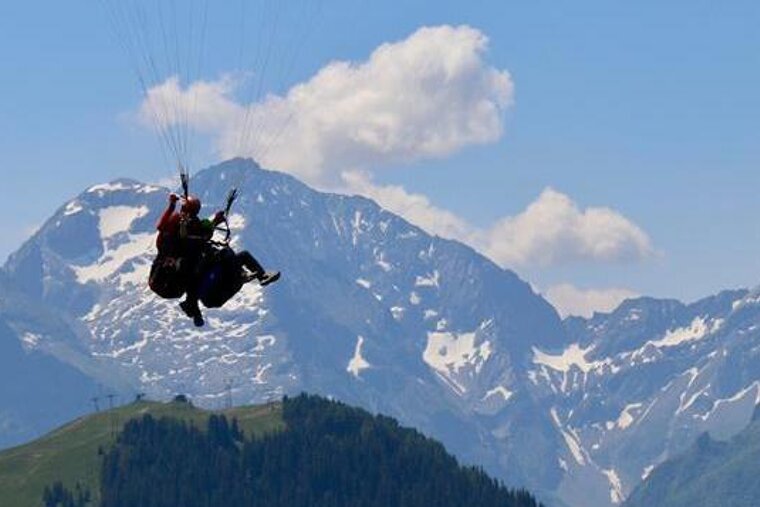
Solo paragliding
If flying tandem was not enough for you and you have decided that “going solo” is the only way fly, then you should book yourself onto a beginners course. Regardless of what some reckless souls may say, the only safe way to learn to fly is to be trained by a qualified instructor.
The official regulatory body in the UK is the British Hang Gliding and Paragliding Association (BHPA). They have a list of all the registered flight schools in the UK that offer tuition for all levels of pilot. However, what could be nicer than learning to fly in Val d'Isere? If fatigue or frustration begins to get the better of you then you only have to glance skywards to be reminded what it's all about.
The French training is split into three separate weeks: the Initiation course, then the Perf 1 and Perf 2 courses. These can be taken individually or back to back, but they don't have to completed all in the same year. A number of schools in the area offer five day Learn to Fly courses from June to October. During the five days you will become familiar with your equipment, learn to master the control of your wing on the ground and make your first solo take-offs from the gentle nursery slopes. The remainder of the course is spent building your skills and confidence with a number of smaller flights and then culminating in long flights from the mid-mountain take-off zones whilst in full radio contact with your flight instructor. These courses are interactive affairs where you are encouraged to ask questions and the instructors will test you on topics covered – after all, your safety depends on it. In order to make the most of these courses, you should be in reasonable physical shape beforehand as you will be walking and running up and down the nursery slopes several times while you get the hang of it.
If you have already completed a basic level course (here or elsewhere), then further tuition is available (and necessary) in order to hone and improve your skills in the sky. Improver courses or specialist training in flying thermals, cross-country and even tips on competitive flying are available. You will be asked for proof of previous flying experience (FFVL niveau vert / BHPA Elementary or Club Pilot or equivalent) before being accepted onto these more advances courses.
If you are already an experienced pilot then you will have an absolute field day flying in Val d'Isere. However, before setting out to fly in completely unfamiliar territory it is always worth seeking advice from your fellow flying club members or from local pilots when you arrive. The more you know about the site and the region, the safer and more enjoyable your flying will be. Don't rush to be the first to launch; sit and watch what the local pilots are doing as their actions will give you a good indication of prevailing conditions and thermal activity, in addition to your own assessment of the area. Always carry your flying licence or membership card with you and ensure that your medical insurance covers you sufficiently for flying abroad, including third party liability cover.
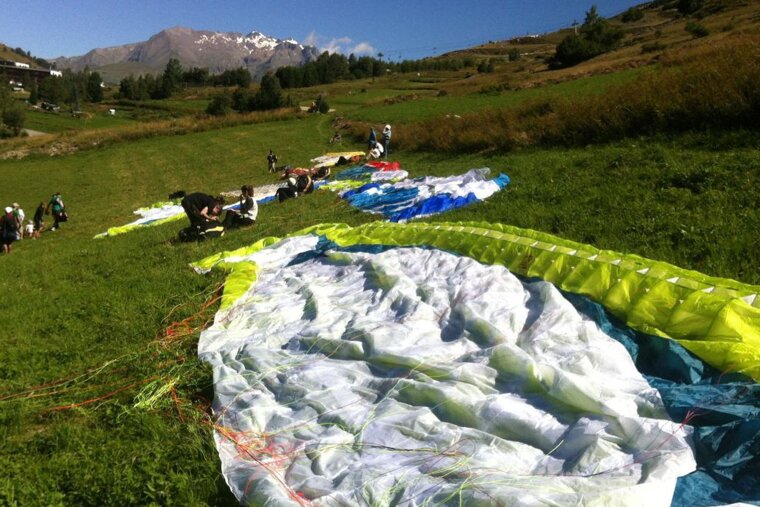
Take-off areas
Nearly all flying sites in France are open to the public although they may be controlled by one of the local flying schools or clubs, in conjunction with the governing body. You may find these schools and their tandem pilots have priority at the launch areas. Some sites, for various reasons may well be closed during parts of the year (especially in the nature reserves when animals have young) so it is important to respect these closure periods.
All the official paragliding sites have notice boards placed at both the launch and landing areas, giving information of school or club address and phone numbers, rescue services phone number or radio frequencies. These notice boards describe launch directions and landing approaches, flying restrictions, wind and thermal turbulence problems if any, areas that may be dangerous to fly near, and so on. Again this information tends to be in French but English translations are becoming more and more common. Keep your pocket dictionary handy just in case!
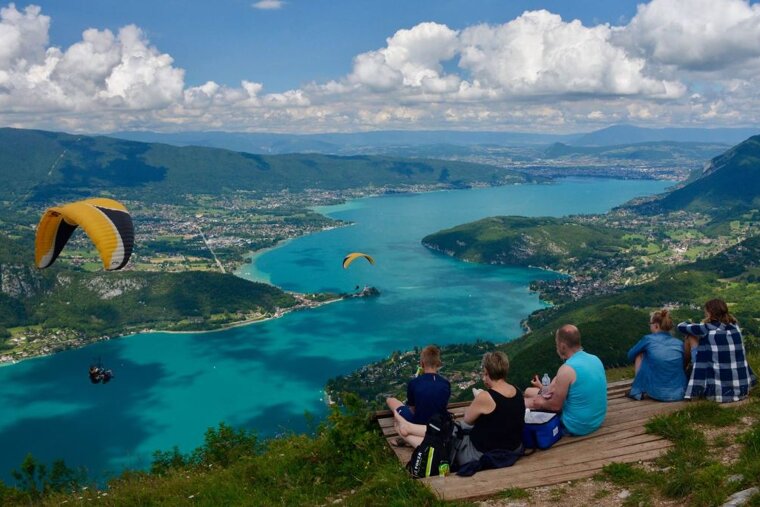
Landing areas
It is imperative that you only land on official sites as not doing so can cause conflict with local landowners. Landing areas get lost as a result of the impolite and disrespectful attitudes of a few pilots. If you do encounter problems and are forced to make an emergency landing somewhere, always be polite and apologetic and offer to pay for any damage caused to the landowners’ property or crops if necessary (your third party liability covers you for such eventualities).
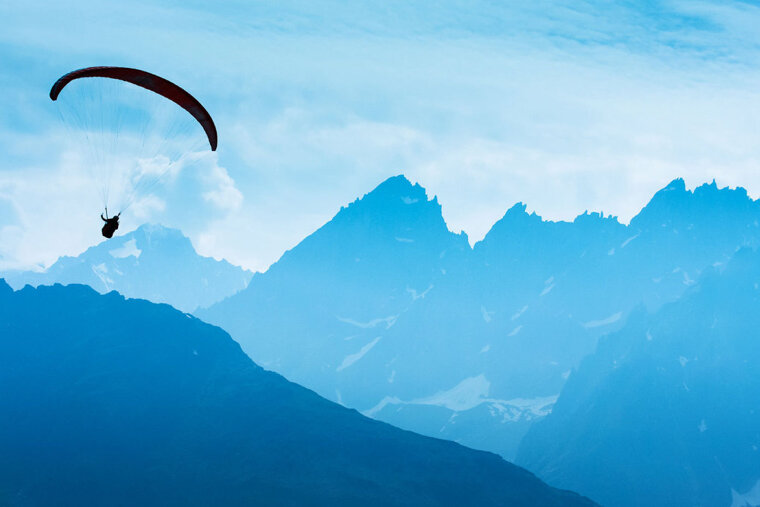
Paragliding equipment
If you’re thinking of travelling here with your own paraglider it's worth doing bit of research into the baggage policies of a couple of airlines for the latest prices and conditions
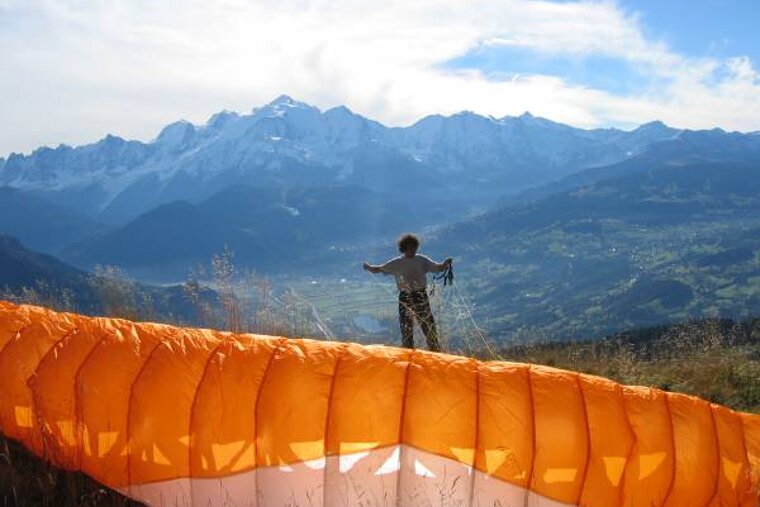
Who to paraglide with
There are a number of activity companies and flying schools in Val d'Isere. Click on the link below to find their details.
